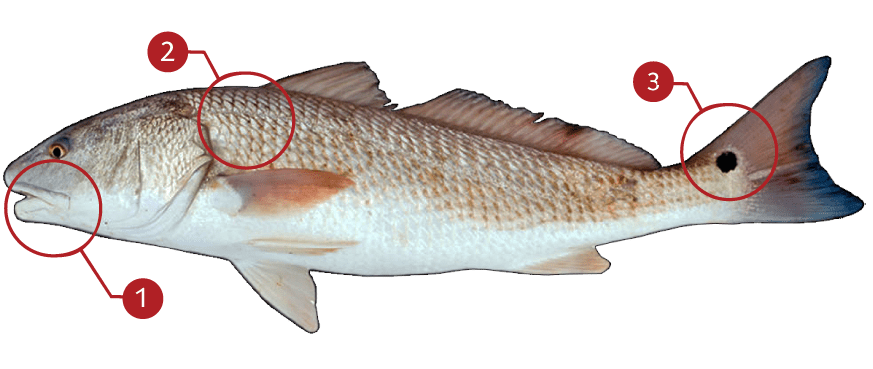RED DRUM
How to identify a Red Drum
The red drum can be distinguished from the black drum by its lack of chin barbels and more elongated body. The body has coppery red overtones on a silvery gray background. The most obvious and characteristic marking on the red drum is a large black spot about the size of the eye on either side of the caudal peduncle, just before the tail fin. Sometimes there are two spots on each side, and occasionally there may be similar spots on the body.
Where to catch Red Drum
The red drum is found in the western Atlantic Ocean from Maine to the Gulf of Mexico. The red drum is a schooling species that occurs inshore over sandy or muddy bottoms. It inhabits both salt and brackish waters and can tolerate fresh water. It is found in inlets and channels, and smaller specimens may be found in shallow estuaries.Large red drum can be taken from just above the breaker line on an incoming tide or near channels, inlets and shell beds.
IDENTIFICATION

| |
The Red Drum can be distinguished from the Black Drum by its lack of chin barbels and more elongated body |
| |
The body has coppery red overtones on a silvery gray background |
| |
The most obvious and characteristic marking on the red drum is a large black spot about the size of the eye on either side of the caudal peduncle, just before the tail fin |
TARGET AREAS
|
|
Acknowledgements: We thank TAKEMEFISHING.org (www.takemefishing.org), Wisconsin Department of Natural Resources, Indiana Department of Natural Resources for their contributions to these FISH FACTS.

